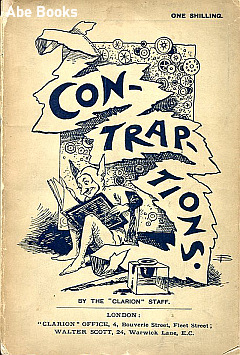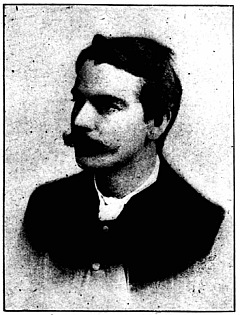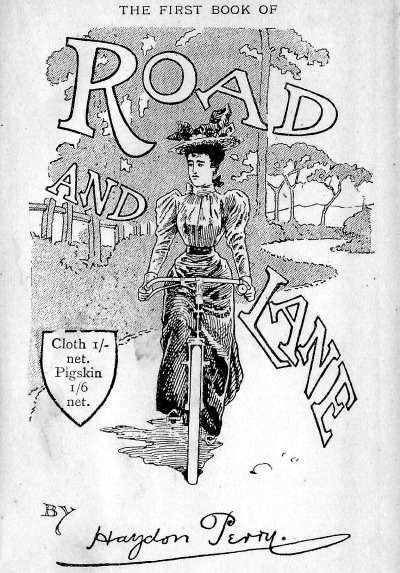
This site celebrates the life and work of sculptor John Cassidy (1860 - 1939).
Comments welcome at charlie@johncassidy.org.uk

Cassidy's bust of Haydon Perry first came to public attention at the Manchester Academy of Arts exhibition at the Manchester Art Gallery in February 1902, where it was displayed in clay model form.
The reviewer comments that 'Mr Cassidy's talent is perhaps shown to more advantage than his other, finished, works' (a marble bust of Dr Schunck FRS and a bronze relief of the Late Tom Jones, FRCS.)
The photograph shown here was printed in a long article about Cassidy in the May 1903 issue of Manchester Faces and Places (also known as just Faces and Places). For a copy of this article, see this link.
The photograph appears to be of the clay model. We have no evidence of a bronze or marble version, nor any record of the work's commission. It's possible that Cassidy knew Perry and made the model as an exercise in modelling moustaches. It's unlikely that it still exists, but one never knows.
Clarion
The Clarion cycling movement followed on in 1891 with the
creation by Robert
Blatchford of The Clarion newspaper, a
weekly socialist publication with 'a Britain-focused
rather than internationalist perspective on political
affairs'. Founded in Manchester, it moved to 4
Bouverie Street in Londonís Fleet Street area in 1895
where it continued publication until 1934. The Manchester
Clarion Cycling Club still thrives in the 2020s.
In 1895 The Clarion published an anthology of
pieces by its members, entitled Contraptions
(Clarion's slang name for Public Houses). Perry's
contribution 'The Upper Hand' appears to have been an
early version of the 'Planet of the Apes' idea.

Contraptions: By the Staff of the "Clarion" and Others. With Seventy Illustrations by "Pal", J.S. Knight, and "Boggs." London: Walter Scott, 1895.
Sources:
Ancestry.co.uk
British Newspaper Archive
Guardian online
Manchester City Library
The Working Class Movement Library
Findagrave.com
Website created and compiled by Charlie Hulme and Lis Nicholson, with the invaluable assistance of the John Cassidy Commitee, Slane Historical Society.
Haydon Perry (1865-1914)
 Haydon Perry was a
journalist who lived and worked in Manchester and
specialised in writing about cycling. So much is
true. But he was many other things; listing his
career may be too long for a feature of this kind, but
we'll try.
Haydon Perry was a
journalist who lived and worked in Manchester and
specialised in writing about cycling. So much is
true. But he was many other things; listing his
career may be too long for a feature of this kind, but
we'll try.
He was born Frederick Haydon Perry in 1865 in Oakhill,
near Shepton Mallet, Somerset. His father the Reverend
Frederick Jacob Perry was an Independent Christian
Minister and tutor, born in Watlington, Norfolk; his
mother Jane hailed from Dorset and his eldest sister was
born in Lynton, Devon. It was standard practice that
such Ministers moved around in this way.
By 1881 the family were in Manchester at 26 Yarburgh
Street , Moss Side (then a fashionable suburb) and
Frederick gave his occupation as 'Secretary'.
Frederick died in Manchester in 1882, and Haydon, now aged
25 and working as a journalist) stayed with his mother
Jane ( 'living on own means') and a General Servant,
Isabella Murray at 144 Chorlton Road, Stretford. He
was paying his mother 'six shillings per week for sole use
of the back bedroom and joint use of sitting room'.
Haydon never married. His mother Jane left
Manchester to live with her father-in-law's family in
Gloucestershire, where she died in July 1911. She is
buried, with her husband and a grandson who died in
infancy, in a family grave (section F, non-conformist, no.
1080) in Southern Cemetery. The black marble headstone
stands out clearly among many stone ones.
Haydon took to living in boarding houses, like many
single businessmen. In 1898 he moved to London to edit a
short-lived Liberal newspaper, the Enfield
Chronicle, while retaining his links with
Manchester. A 1900 electoral register lists him a
boarder in Enfield, with two rooms in the home of Mrs
Ellen Chandler, 'Ladywood', Little Park, Enfield. (At the
time, Enfield a market town was in Middlesex north of
London; today it is a London Borough.) However the 1901
Census list him as a boarder at 53 Bishop Street,
Whaley Range, Manchester.
In 1911 he was living above a shop at 22 Derby Street,
with the shopkeeper, Elizabeth Knight Edwards, and her
half-sister Mary Knight. To Elizabeth fell
the task, as executrix, of dealing with Haydon's
estate after he died at 22 Derby Street on 11 November
1914, but she died in hospital a few weeks later on 24
December 1914. He is buried in a common grave (H
Consecrated 3160), with his name spelt 'Hayden', in
Manchester's Southern Cemetery. Elizabeth Knight Edwards
is interred in the same plot. How she came from wealthy
South Kensington to in a shop in Manchester is a
mystery.
Career
After studying at Owens College, Heydon Perry found a job
on the Manchester Examiner , a liberal-leaning
newspaper then edited by Henry Dunckley, in 1886. He
stayed until 1891, when he left to find his own way,
making money from his hobby by writing pieces on cycling
for the Manchester Guardian, The Clarion
and other periodicals. At the time, the unwieldy
'penny-farthing' was giving way to the bicycles in a
design basically the same as today's machines.
To Perry and his readers, 'cycling' meant trips of up to
30-50 miles in the countryside around Manchester.
His Manchester Guardian output, mostly written
anonymously - not always by him - under the heading
'Cycling Notes' was phenomenal, often filling most of a
large-format page each week with the expansive text often
found in Edwardian writings. His obituary in the
Manchester Guardian tells us :
Mr Perry's local knowledge and quaint humour were happy ingredients in a column which, under the inspiration of the late W.T.Arnold, became a special feature of this paper in the years when then the "safety" bicycle first gave cycling an enormous popularity.
In addition to his newspaper items which reduced in
frequency from around 1906, he compiled two
pocket-sized books: Road and Lane, A handbook for
Manchester cyclists and tourists. (1896) and The
Second Book of Road and Lane (1897) published by
Abel Heywood. They contain suggestions for rides,
based on his newspaper articles.

Tips for walkers, some from railway stations, are also included in the 100-page books. Much attention is given to the condition of the road surfaces and ways to avoid the dreaded stone paving. Attempts to trace the routes today will prove difficult, as no maps were provided.
An article about him (source of the photographic portrait
at the top of the page) in the magazine Cycling of
4 March 1899. We read that as a journalist during the
cotton strike of 1892-93 he became an expert on the cotton
industry, and wrote a pamphlet The Story of the
Manchester Ship Canal, but we cannot at present
trace a copy. He was also said in 1899 to be
preparing a book for Harrods entitled The Highroads of
Cheshire there is no record of this being
published.
He travelled extensively in Europe - on one occasion
acting as secretary on a visit to France for
Manchester banker Sir William Cunliffe Brookes - and also
visited the USA.
Cycling and its Future
An afternoon lecture by Haydon Perry at the New Islington Hall, Manchester on 30 January 1897, as reported in the Manchester Guardian, 1 February.
A very large audience was presided over by Mr. Charles Hughes. Before and after the lecture Miss Edith Robinson and Miss N. Wilkinson gave violin and piano selections, and Mr. Louis Calvert recited from "Henry V." and the "Bab Ballads".
Mr. Perry, in the course of his lecture, said with regard to the bicycle itself he thought that something very near to perfection had been reached, although there were novelties in small details which were sure to be generally adapted.
There were some who expected much in the future from the application of various motive powers to the cycle. For those who were cripples or infirm a "mechanical" motor would no doubt be a great boon, and he could imagine the ordinary tourist carrying it as a reserve, although not in any of its present forms, to use as an auxiliary in mountainous districts or at the end of along day's journey. But he did not believe it would ever take the place of the healthy muscular action without which cycling would cease to be the grand game it is.
Mr Perry referred to the future of English roads, and predicted that the time when the wayside inns would have their own again. With it was fast coming too the revival of the in art of Telford and Macadam, an art which was so dormant as to be in danger at being lost in the days which followed the railway fever of the "Forties".
Mr. Perry's remark that the bicycle is the most potent force for the maintenance and improvement of man's physical strength and beauty that has been at work since the age when the majority of mankind were constantly engaged in war was was met with applause. This new force was even more powerful than the old one in one very important respect, namely that its action was extended to girls and women, and would become more and more so.
Special thanks to Rosemary Sharples for inspiring this feature.
Compiled by Charlie Hulme April 2023.